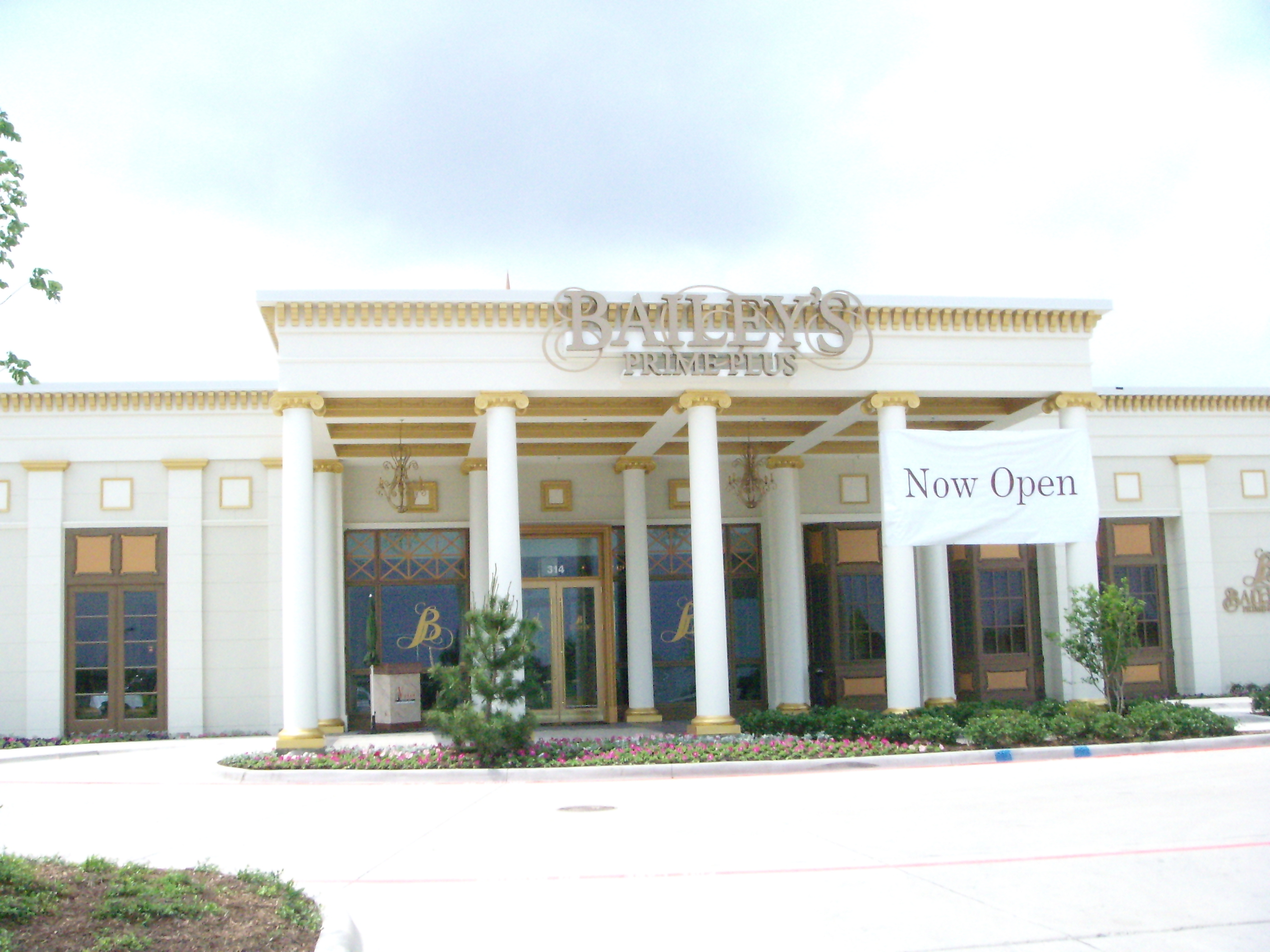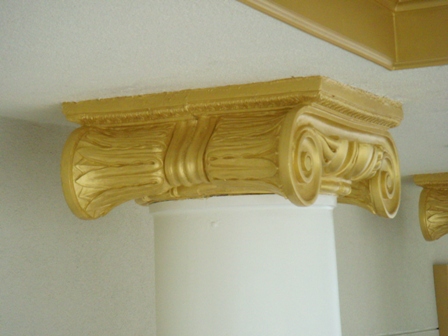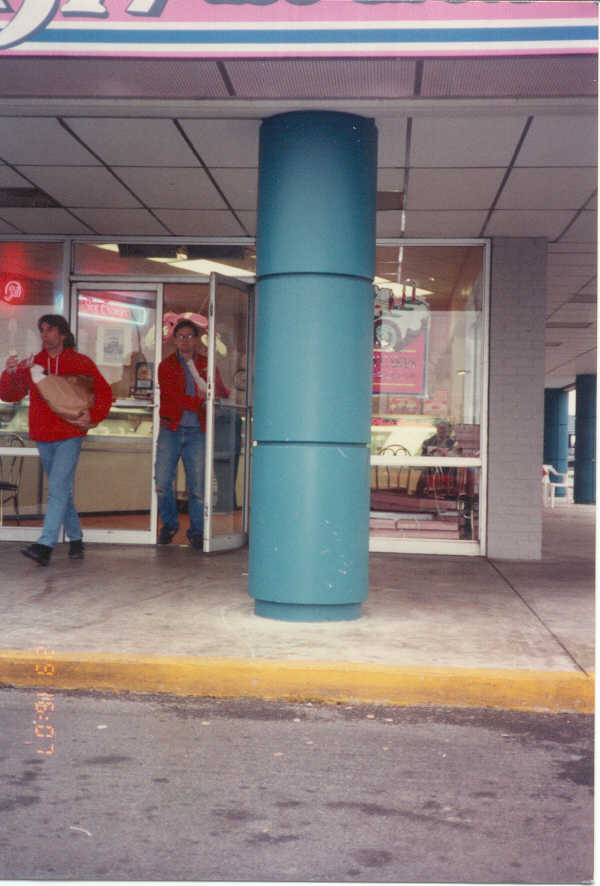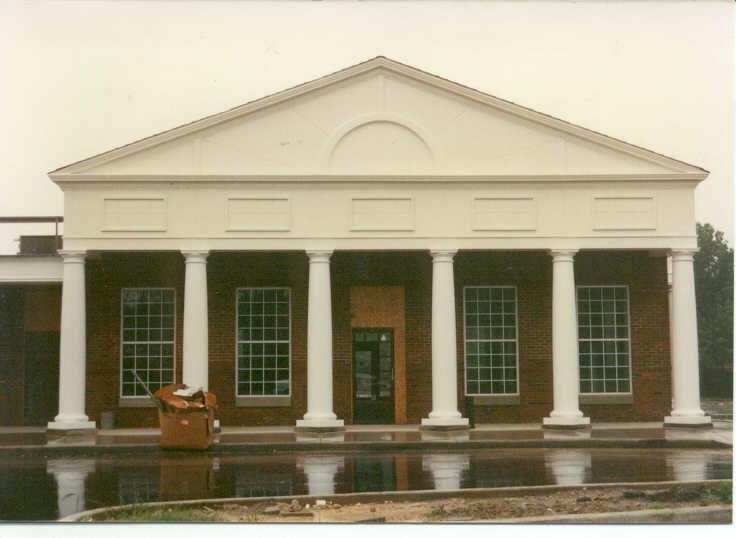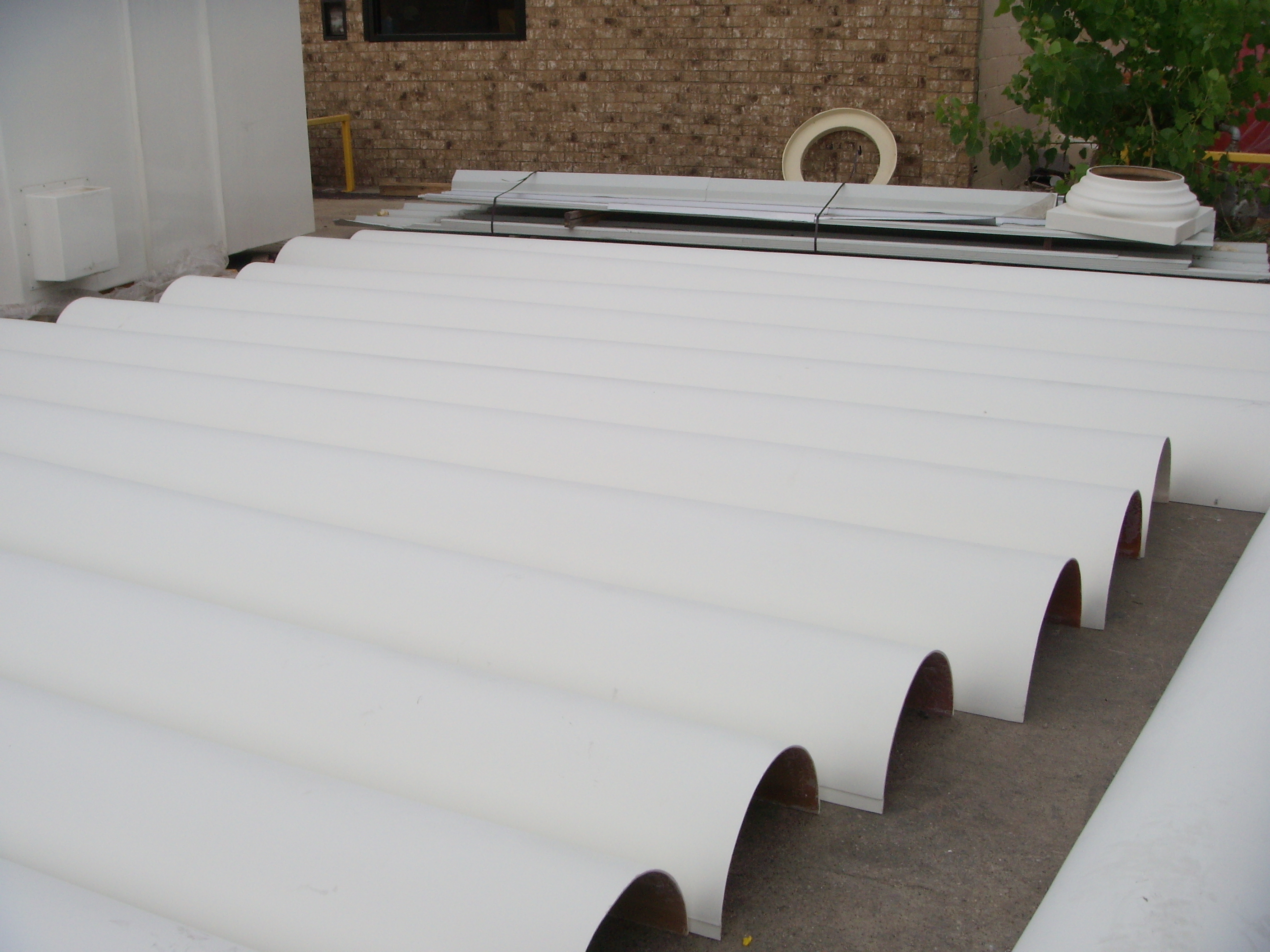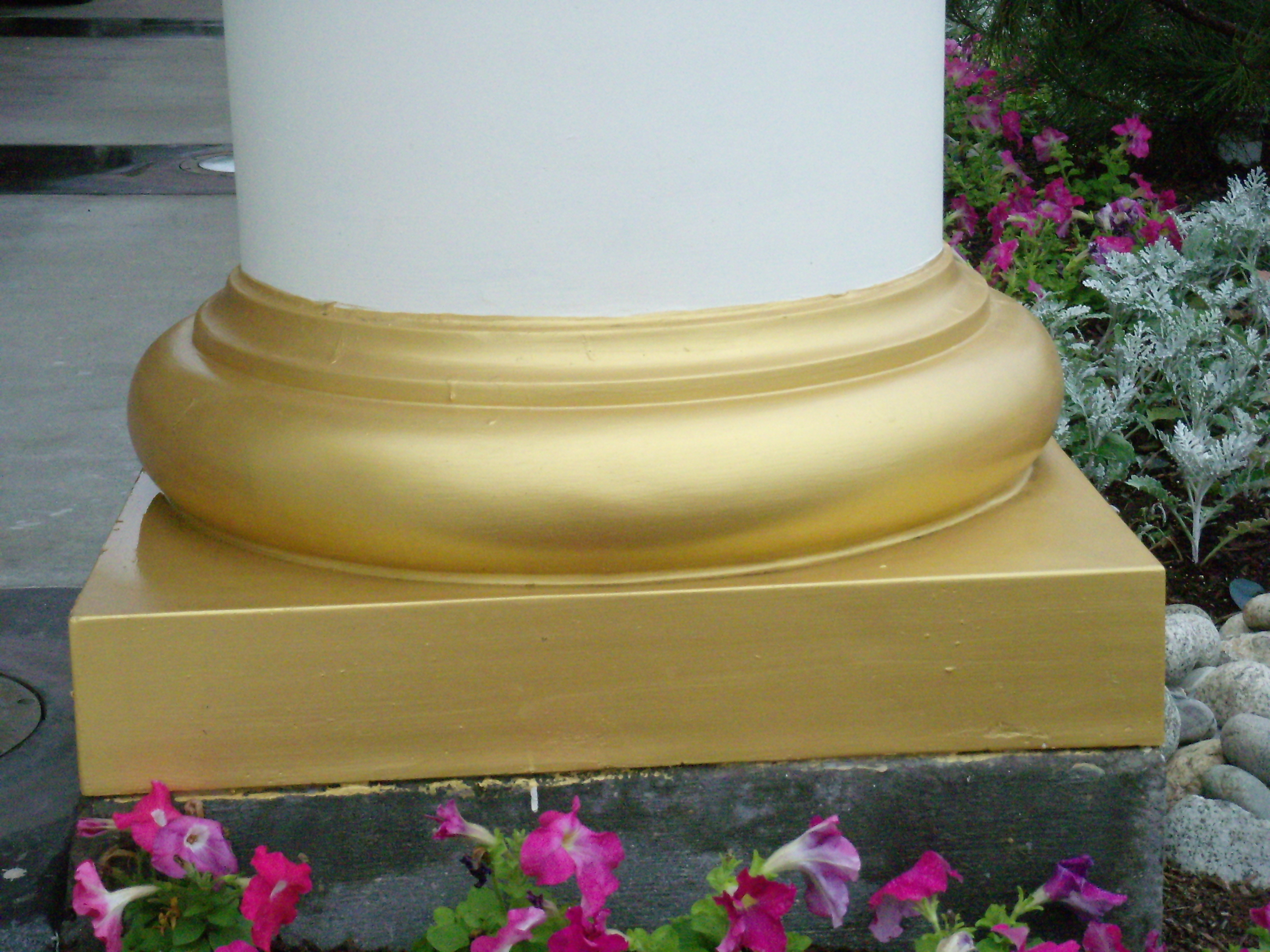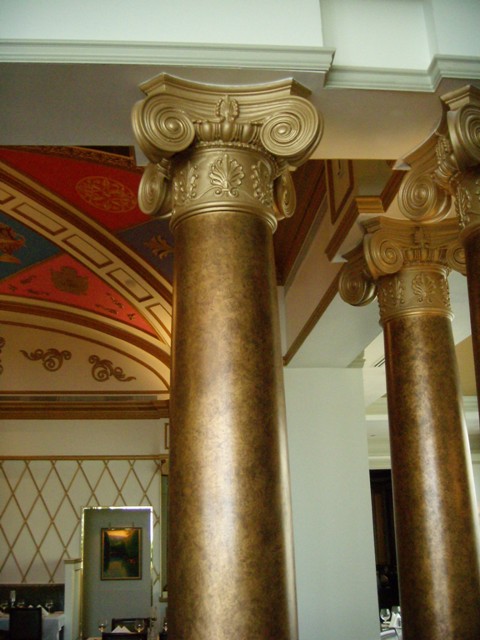All capitals, bases and shafts consist of two match halves. They have a smooth, gel-coat finish that will be sanded and ready to assemble, finish the joints and paint by others.
Column Cover Installation
The Caps and bases are installed in two pieces first, then the shaft covers are set in place over the Cap and Base. The cap will have a partially closed top and the base a partially closed bottom to facilitate anchoring into place. Once the cap and base are installed, they will help align and hold banged on, leaned against, that sort of treatment, such as a situation where they would be out of reach of the public. In a situation where the covers are assessable by the public, or the covers are very tall and exposed to wind loads, it is necessary to have some outriggers attached to the structural shaft for stability of the column cover shafts.
After the cap and the Base are installed, place one half of the shaft cover into place over the cap and base. Countersink screws through the shaft and into cap and base. Work out and attach the outriggers form the structural shaft to the cover shaft. Then install the second half of the cover shaft, countersink screws through the second cover half and into the first cover half through the lap joint. Then fill and float the screw holes and the joint, sand, and smooth, and paint. For the material to be used for the filling and floating, we recommend is a standard “Bondo” filler typically used for auto body repair. However, any good quality construction filler can be used.
Specifications for Fiberglass Column Covers
1. Configuration:
1.1 Capitals: Capitals shall be configured as shown on the approved drawings. Each capital shall consist of two matched halves with internal, match drilled flanges for bolting.
1.2 Bases: Bases shall be configured as shown on the approved drawings. Each base shall consist of two matched halves with internal, match-drilled flanges for bolting.
1.3 Shafts: Shafts shall be configured as shown on the approved drawings. Shafts shall consist of two matched halves with flush shiplap joints and shall have a smooth, gel-coat finish that will be sanded and ready to assemble, finish the joints and paint by others.
2. Materials:
2.1 All Fiberglass Components shall be fabricated using polyester resin, shopped, strand e-glass reinforcement. The laminate will have a nominal 25% fiberglass, 75% resin ration. A class 1 Fire retardant resin can be used as an option when required by local fire codes.
2.2. The exterior will have minimum 15 mils thickness of a gray primer, polyester gel coat that will be sanded and ready to paint by others.
2.3 The filler material for finishing the joints is recommended to be a standard auto body filler or “BONDO.” Any quality construction filler can be used as an option.
3. Installation:
3.1 Prepare the existing structural columns to receive the outriggers and column covers in accordance with the approved drawings.
3.2 If applicable, assemble the bases and capitals around the existing structural columns securely, plumb and true.
3.3 Measure between the capital and base of each column to determine the shaft length and trim for best fit.
3.4 Assemble the first column cover half-shaft securely to the outriggers and the base and capital. Use countersunk screws.
3.5 Install second half-shaft to the already secured base, capital and first half-shaft using countersunk screws.
3.6 Sand the joint areas of any protruding material.
3.7 Fill the joint areas with the chosen filler. Sand smooth.
3.8 Column cover is installed and ready to paint.
